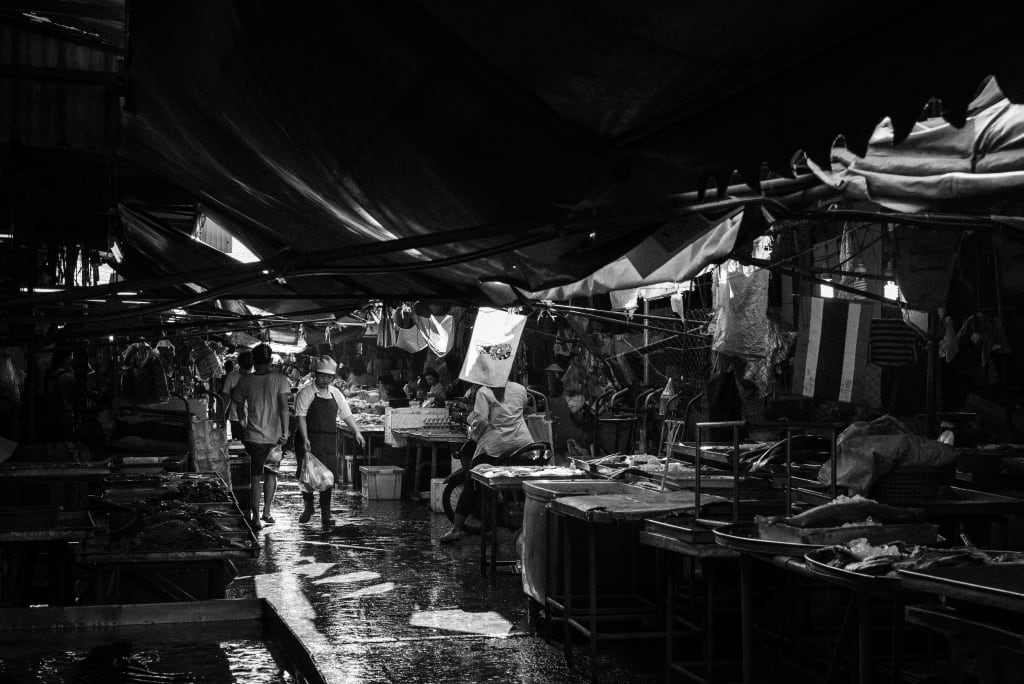
Along the banks of the Chao Phraya river lay parts of Bangkok rarely visited by outsiders. This the Bangkok, the Siam, of yesteryear. A place of narrow alleyways quiet during the heat of day but full of life, noise and barbeque smoke at night. It’s a contradiction to much of the ever modernising city where skyscrapers and shopping malls multiply by the day.
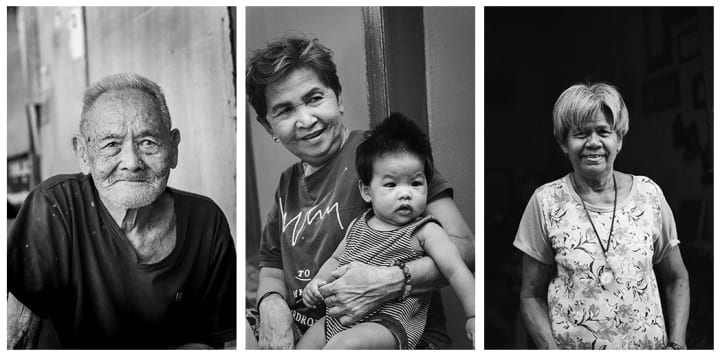
The dockside area of Khlong Toey has a colourful history to say the least. Swamp land originally populated in the 1950’s by workers arriving from the provinces to fill a labour shortage, the area is now home to a community of 100,000. A government land rent scheme that made it relatively easy and cheap for people to resettle in the city was abandoned in the 70’s, meaning residents are technically squatting and are now under threat from developers looking to build yet more apartments on the prized piece of land.
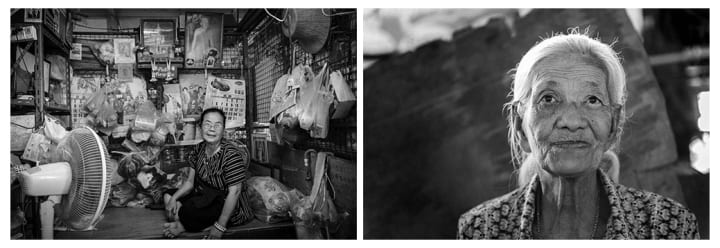
Khlong Toey is one of Bangkok’s lowest income earning areas and has been known for instances of violence. Outsiders are hesitant to visit and because of this reputation, its inhabitants face daily struggles and disadvantages. Yet to walk through the narrow alleys in this labyrinth of makeshift houses is to be greeted with smile upon smile. Mothers and grandmothers sit on stoops nursing and playing with children, while young men at a muay thai school play board games in between training sessions using bottle caps as makeshift pieces. The atmosphere is that of a sleepy rural village, and it is only the concrete around us and the distant undertone of traffic on the surrounding motorways that reminds us we are in the middle of a major city.
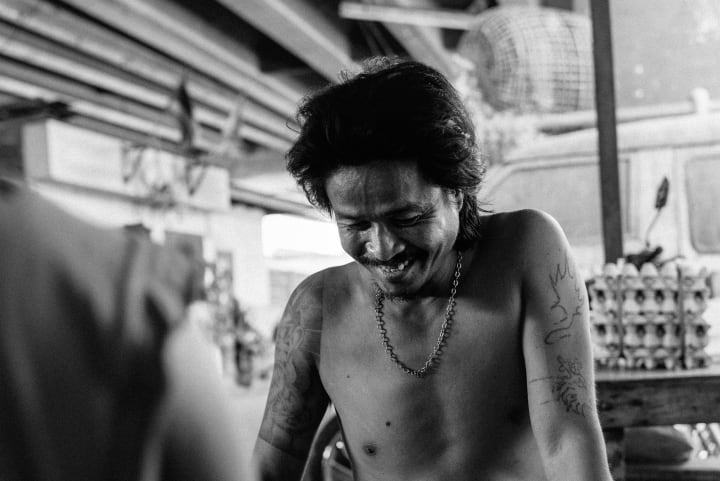
In contrast to this sleepy pocket is Khlong Toey market. The largest wet market in Bangkok and source of supplies for many of the city’s restaurants and street stalls. Here the narrow walkways between market stalls are packed with early morning shoppers, and the rhythmic thunk, thunk of cleavers on heavy chopping blocks signals the cleaning and preparation of fish and meat. The ground underfoot is slippery with melted ice, and motorbikes give only a split second warning to jump to the side as they barrel through the crowd. Amongst this chaos coolies sit patiently in the shade waiting for their next customer.
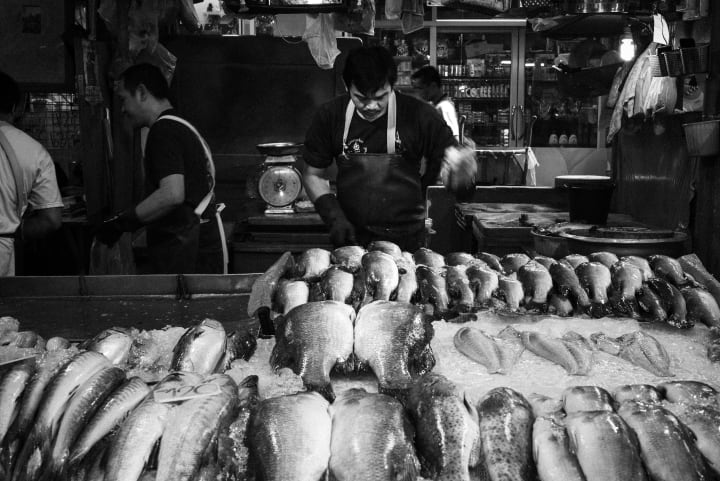
To the west of the river lies Phasi Charoen District. Descending the staircase from Bang Wa station this area appears at first glance like most of the city as scooters and tuk tuks crowd the motorways and the footpath is overtaken by people busily going about their day. But turn off the main roads and the noise dies down and we are suddenly amongst rows of small, well-kept if faded houses in narrow laneways. There are no cars here, the streets aren’t wide enough. Occasionally the peace will be broken by the whine of a motorbike but for the most part it’s quiet. Behind worn shopfronts a barber works on a customer with clippers, and a doctor of Chinese medicine prepares tea while talking with customers who also happen to be lifelong friends. Chillies dry in a basket in the sun while street vendors prepare for the afternoon trade. The elderly wait out the afternoon heat in the shade. As the day wears on, smoke starts to drift from street vendor stalls and grilled meat smells fill the air. Children arrive home from school and sounds of laughter and play grow louder. The area is transformed into a hive of activity. Refuge can still be found though in the grounds of a local temple where a monk dutifully sweeps the courtyard and a single devotee circles the temple in meditation.
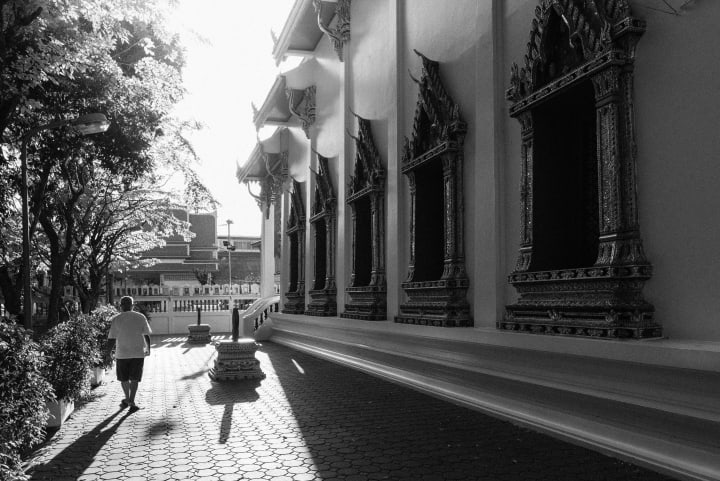
Bangkok is to many both a clamouring capital and open air museum of historical palaces and temples. Shiny modernism against gleaming past. For one of the world’s most visited cities, known for nightlife and hedonism, there are still pockets of surprise, where slow living and simple needs linger. Perhaps in time generational change will see Khlong Thoey disappear altogether and Phasi Charoen modernised, or to use the feared word, “gentrified”. But for now old habits persist and life remains even in the midst of the concrete and glass much like the people; gentle and peaceful and just a little frayed around the edges.
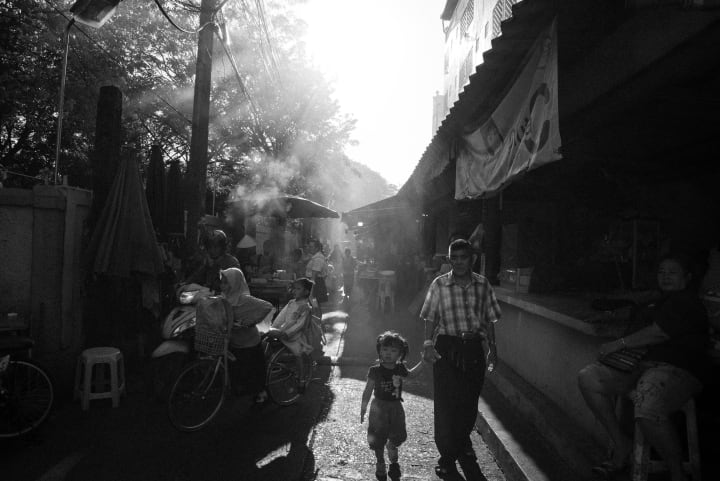
About the Creator
Mark Eden
Freelance travel photographer and writer based in Melbourne, Australia. I create images and words that help tell the stories of our vibrant, diverse world and its people.
www.markeden.com.au




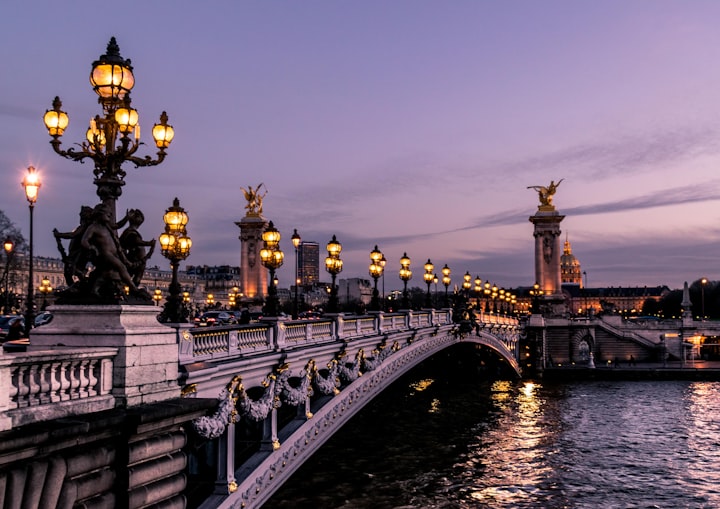
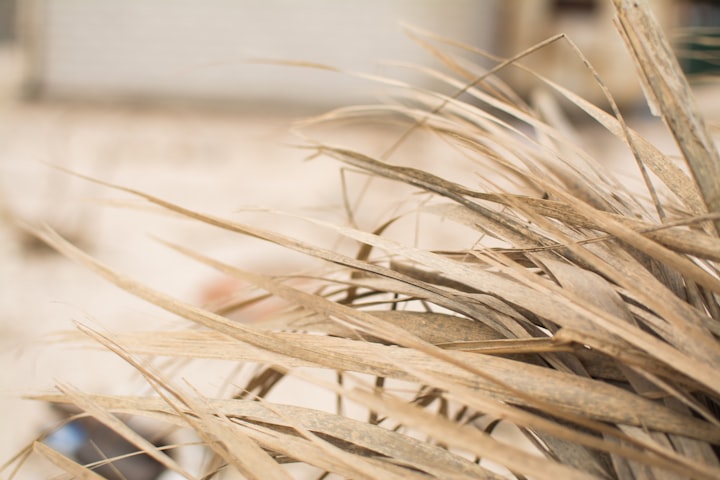
Comments
There are no comments for this story
Be the first to respond and start the conversation.